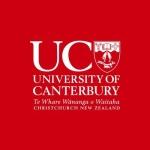New UC research spin-out company launched and pursuing spacecraft solutions
What do you need to go faster, farther and higher? Answer: The right stuff and some new materials. University of Canterbury-born company Koti Technology is helping to commercialise a ceramic coating system that may some day be part of the NASA spacecraft programme.
Hypersonic vehicles – round the globe spacecraft - are not yet reality, but traveling at 5-10 times the speed of sound is certainly driving materials science in extreme new directions. All aircraft need a paint job, it just turns out this one needs a coating that can withstand temperatures over 1500C - hot enough to melt most metals.
University of Canterbury (UC) associate professor Susan Krumdieck was named as the only international investigator in the US National Hypersonic Science Centre (NHSC) because NASA and the US Air Force Office of Research believed her technology for producing protective ceramic coatings on complex shaped objects was the only one in the world that could provide the "sapphire paint job" which could protect the silicon carbide composites from the extreme environments of hypersonic flight.
Koti chief executive Sam Davies Talwar, a UC graduate, is working with professor Krumdieck and a team of PhD and undergraduate students to develop commercial scale systems for this and many other more down to earth industrial and medical applications.
Aerospace company Teledyne is managing the consortium including six top US universities. Over the past month Krumdieck has been in the USA meeting with other materials scientists and with the managers of the consortium.
``We had a bit of a delay with the earthquakes, but it was great to be able to show the group our first results - the material they wanted, coating the composite material they provided in a uniform way with no visible cracks or flaws," Krumdieck said today.
She is currently at the Colorado School of Mines, where some material testing of future samples may be carried out with collaborators.
A team of four fourth year UC mechanical engineering students have been working on the project. They had a lot to learn as they and post doctorate types in physics, chemistry and materials science are usually the ones doing the research in other labs that undertake this high-tech research overseas. The team were able to deposit a layer of alumina (sapphire) on samples supplied by Teledyne which will be packaged up and sent for testing this month by other NHSC consortium members.
``It was really great showing the scanning electron microscope images of the coatings to the programme director, and having him really be amazed that the coating was such high quality - a great achievement for undergraduate engineers," Krumdieck said.
The coating process was invented by Krumdieck during her PhD thesis research in 1999. It has since been developed into a platform technology with potential applications in industries such as energy production, electronics, dairy, aviation, industrial manufacturing, medical devices and mining.
"The list of companies that have contacted us wanting a ceramic coating on something is quite large and growing" Davies Talwar said.
``We are gearing up to put the alumina and other coating materials onto samples companies and other research groups have sent us. In fact we have several summer scholarships on offer and we are looking for new postgraduate students."
Koti is also working with New Zealand equipment manufacturer, Buckley Systems in Auckland to build industrial scale coating machines for customers from around the world.
